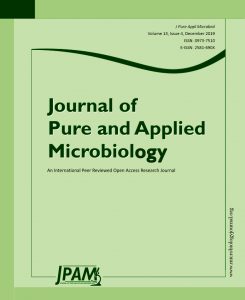To assess the antifungal activity of the crude aqueous extract of B. carteri. Three independent concentrations (1%, 2.5%, and 5%) of the crude aqueous extract of B. carteri were tested for their in vitro activity against selected fungal strains. The treated (5% concentration) and untreated A. alternata samples were analyzed for morphological changes using scanning electron microscopy (SEM). Fourier-Transform Infrared (FTIR) spectrometry of the extract was done to identify the phytoconstituents responsible for the antifungal activity. Results showed that the crude aqueous extract of B. carteri inhibited the growth of all the selected fungal species. The percentage of mycelial growth of the tested fungi decreased as the concentration of the aqueous extract increased from 1% to 5%. SEM-based studies of A. alternata treated with 5% showed significant morphological changes including shrunken hyphae, membrane disintegration, and distorted conidial structures compared to the untreated fungal cells. The crude aqueous extract of B. carteri has the potential to be used as a natural and effective fungicidal agent for controlling the growth of pathogenic fungi.
Antifungal activity; Aqueous extract; Boswellia carteri; FTIR; Plant pathogenic fungi; Scanning electron microscopy.
© The Author(s) 2019. Open Access. This article is distributed under the terms of the Creative Commons Attribution 4.0 International License which permits unrestricted use, sharing, distribution, and reproduction in any medium, provided you give appropriate credit to the original author(s) and the source, provide a link to the Creative Commons license, and indicate if changes were made.


